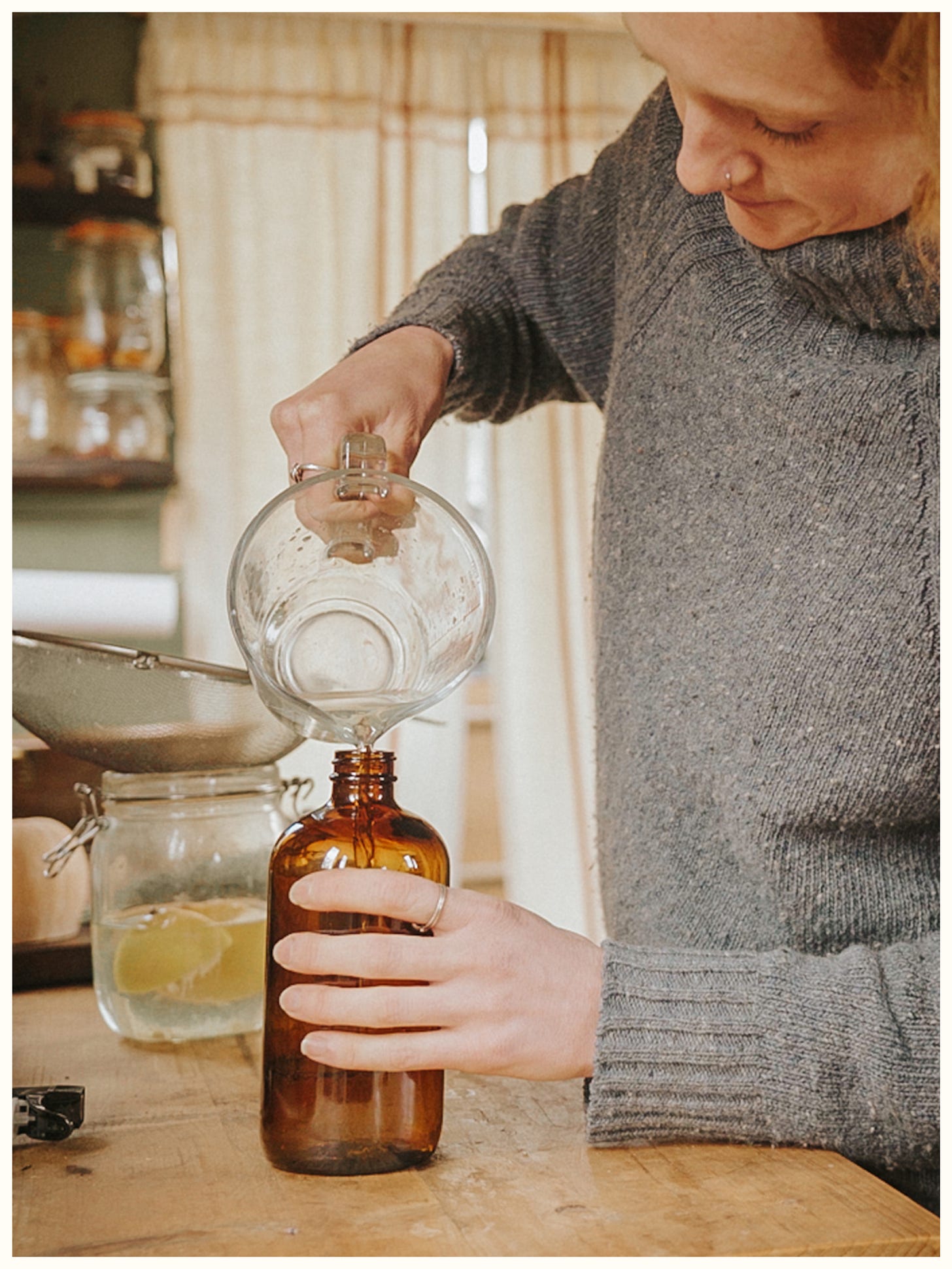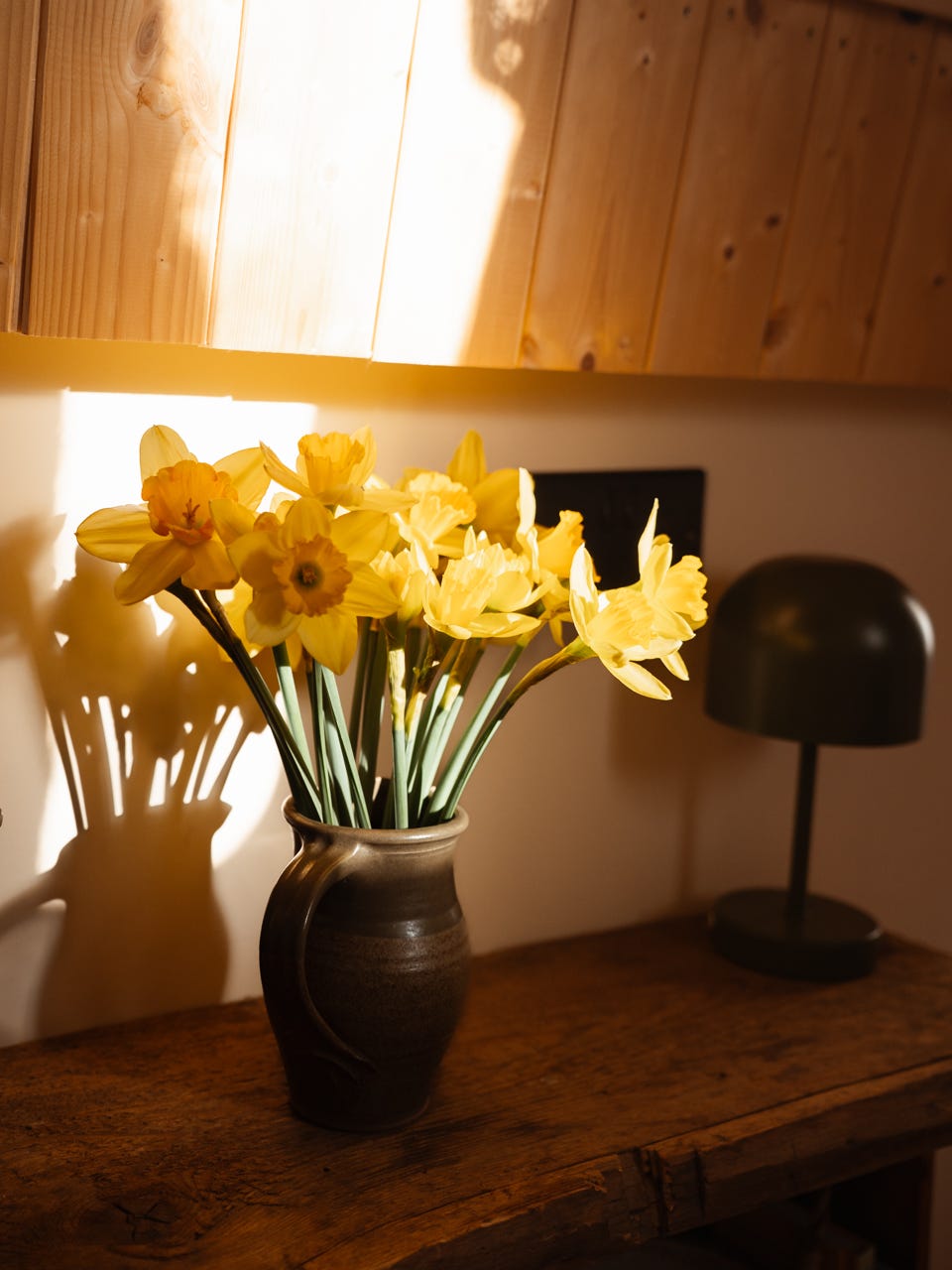Hey there! Jack here from this tiny life.
Before we dive into this week’s post, I just wanted to take a moment to say a huge thank you. We’ve just hit 1,000 readers, and we’re honestly blown away by the support! It means so much that you’ve subscribed, read along, and joined us on this little journey.
Gabby and I love sharing our life on the narrowboat—whether it’s seasonal recipes, foraging notes, slow living scribbles, or stories from our small allotment garden. If you’re new here, we’d be thrilled to have you along for the ride!
Our free subscription gets you our weekly posts, and if you’d like to support us a little more, there are a few paid options too. Either way, we’re just so happy to have you here.
Thank you again, and we hope you enjoy this week’s post!
Here’s a question… Do you ever wonder what the younger version of yourself would think if they could see you now?
There is a part of me that thinks 20-something Jack would scoff a little at the title of this post. Wafting around with a duster really wasn’t on his radar, let alone getting joy out of making his own natural cleaning products… but here we are.
I’m an aging millennial, and this, alongside the shift to listening Radio 4 most of the day, suddenly finding M&S clothes quite trendy, and pausing outside estate agents’ windows whenever we visit a new town - is all part of the natural cycle of life.
I’m firmly in my 30s, and I have to admit—Gabby and I have been counting down the days to get our little floating home spick and span after winter.
The Challenges of Winter on a Narrowboat
For anyone who lives an outdoorsy or countryside lifestyle, winter is a constant trudge. Mud becomes a way of life. A pair of trousers inevitably gets demoted to "the dog-walking pair," and coats barely have time to dry between downpours.
Living on a boat, you’re quickly reminded there’s no other choice but to accept that the darker months are synonymous with muck. Reaching home always involves a walk along a sludgy towpath, and no matter how diligent you are about kicking off your boots the moment you step inside, there are always those times when you’re “just popping in” for something— leaving a telltale Hansel-and-Gretel-style trail of mud in your tiptoe wake.
Then there’s the dog. Somehow, her paws seem to harvest topsoil. After every walk, I turn into a toreador, brandishing a towel in a desperate attempt to catch her before she reaches the sofa. But Tilly, when she wants to be, is a lightning-fast little beast. With gleeful precision, she makes a beeline for the cushions, then turns to look at us with an expression of pure innocence—"What? Oh, was that me?"—all while adding to the footprint mosaic now tattooed on the sofa as evidence.
The biggest culprit, however, has to be the wood burner. Over the colder months, it roars away almost 24/7, and the amount of ash and dust it kicks out is remarkable.
To combat this, we have a small, battery-powered vacuum that is, frankly, useless. It manages a half-hearted attempt at tidying up the ash around the stove before giving up entirely and needing a recharge. To be honest, I can empathise. The real workhorses of winter are our broom and dustpan, who religiously report for duty throughout the day.
The only saving grace is that, for most of winter, the dust has the decency to remain discreet, hidden by the dreary light. But then, that moment comes —it’s usually around late February or early March — when the first spring sunshine streams through the window. And suddenly, in that golden spotlight beam, you notice it. The merry, delicate ballet of dust speckles pirouetting and spiraling through the air.
That is when you know it’s time to break out the big guns.
The Big Spring Clean
So, on a spare day last week, Gabby and I set about doing THE BIG SPRING CLEAN. Not just a quick wipe-down of the surfaces and a speedy sweep, but a full-on deep clean—the sofa out on the towpath, three boxes to the charity shop, and the need for an emergency run to the local café for morale-boosting doughnuts midway through the day. That kind of spring clean. I even bought a brand-new mop for the occasion!
If you’ve watched our recent YouTube video, you’ll know how excited we were for this moment. It felt amazing to finally get into those nooks and crannies that had been crying out for attention and to get the hatches flung open to waft in a change of air.
It’s psychological as much as anything else. Spring is a time of renewal and rejuvenation. With a small jug of daffodils brightening the side and the zingy scent of ‘sweet orange’ from our homemade cleaners, our home feels refreshed and ready to welcome in the shift of season.
Why We Use Homemade Cleaning Products
In our vlog, we featured a couple of the homemade cleaning products that we use. I’ll be the first to admit I’m no Nancy Birtwhistle, but we’ve been making our own natural cleaning products for a little while using non-toxic ingredients that are kinder to both ourselves and the environment than shop-bought alternatives.
Many commercial cleaners contain harsh chemicals that can release VOCs (volatile organic compounds) into the air, contributing to indoor air pollution and can trigger allergies, asthma, and other respiratory issues. It’s also staggering how many different cleaners are on the market for individual uses, adding to the wall of plastic in many kitchen cupboards.
By making our own cleaners, we reduce plastic consumption, cut down exposure to harmful chemicals, and create a healthier environment in our home. It is also a great way to save money, and we find it works just as well as commercially produced alternatives.
What Natural Ingredients Should You Have To Hand To Clean Your Home?
Our three favourite go-to’s are: white vinegar, citric acid, and castile soap.
White Vinegar: This is super easy to stock up on, and is a fantastic all-purpose cleaner and deodorizer. It’s great for tackling limescale, cleaning glass, and we even use it as our fabric softener in the washing machine.
Citric Acid: This works wonders on descaling kettles and miraculously erases the black coating on our pans after spending their winter on the woodburner. It’s great at cutting through grease and leaving surfaces sparkling without any harsh fumes - another brilliant all-rounder.
Castile Soap - This is probably the most versatile of the bunch - we have used it for washing dishes, Gabby makes our one-year-old’s body wash out of it, and it’s another great all-rounder by lifting dirt from surfaces. Castile soap is an alkaline, so don’t mix it with the two above!
And a bonus one… Bicarbonate of Soda: A gentle but effective scrubber for stubborn stains and odours.
RECIPES
There are so many different natural cleaners you can make at home, each with specific benefits and uses. Just before we get to the recipes that we use… if you want a resource to turn to for each nook and cranny of your home, these books are a great starting point:
The Naturally Clean Home by Karyn Siegel-Maier
Clean & Green by Nancy Birtwhistle
Simply Living Well by Julia Watkins
But, here are the solutions we use to clean our little floating home:
Kitchen Sides / All-Purpose Cleaner
400ml water
100ml white vinegar
1-3 used lemons or peel or a few drops of your favourite essential oil
We keep our squeezed-out lemons once we’ve used them to add to a solution of 1 part vinegar, 4 parts water. We’ve done the same in the past with orange peel! This adds a lovely citrus scent, diffusing the vinegar aroma, whilst also adding antibacterial properties to the cleaner. Add to a spray bottle for a convenient surface cleaner.
Keep reading with a 7-day free trial
Subscribe to gather by this tiny life to keep reading this post and get 7 days of free access to the full post archives.







